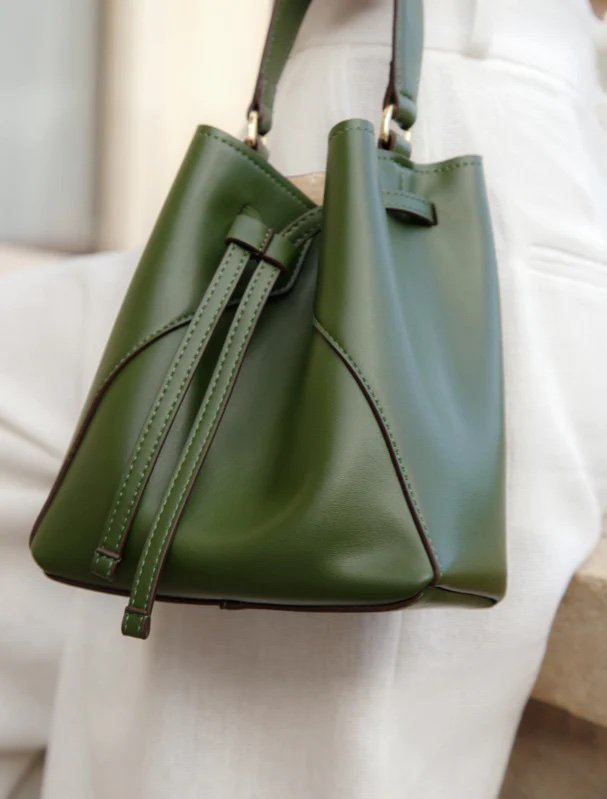5 Vegan and Sustainable Materials replacing leather
The leather industry has long been associated with environmental degradation and ethical concerns. The process of turning animal hides into leather involves the use of toxic chemicals, energy-intensive production methods, and water pollution. According to a study by the United Nations, the leather industry is responsible for 20% of global industrial water pollution. Moreover, the animal agriculture industry that supplies the raw materials for leather production is a significant contributor to greenhouse gas emissions.
From an ethical standpoint, the leather industry raises concerns about animal welfare, as millions of animals are raised and slaughtered each year for their skin. Animal rights activists argue that the use of animal skin for fashion is unnecessary and cruel. Fortunately, there are sustainable alternatives to leather that can replace animal skin without harming the environment or animals.
Photo: Sustainably Chic
Piñatex
Piñatex is a vegan, eco-friendly, and sustainable material made from pineapple leaf fibers, which are a byproduct of the pineapple industry. It is a durable and versatile material that can be used in fashion, accessories, and upholstery. Piñatex has gained popularity among fashion designers as a sustainable and ethical alternative to animal leather. Developed by Dr Carmen Hijosa and produced by the company Ananas Anam.
Photo: Dan and Mez
Cork
Cork is a natural and sustainable material harvested from the bark of cork oak trees. It is a highly renewable resource as cork oak trees can be harvested every 9-12 years without harming the tree. Cork is lightweight, durable, and water-resistant, making it an excellent choice for a variety of products such as shoes, bags, and accessories. Additionally, the production of cork involves minimal environmental impact, making it a sustainable alternative to traditional leather. There are many manufactures of cork leather.
Photo: Intelligent Living
Apple leather
The founder of apple leather is Alberto Volcan, an inventor from Italy, who was looking for ways to use leftover apple waste from the fruit juice and compote industry in Northern Italy. His first prototype was an ecological paper, made using 15% apple waste, that reduced the CO2 impact by 20%-25% compared to other papers. He decided to join forces with Frumat, a company specialising in the recycling of industrial waste, to take his ideas further. Today the product is used by several designers.
Photo: Design Wanted
Mushroom leather
Mushroom leather, also known as mycelium leather or fungal leather, is an alternative to traditional animal leather that is made from the mycelium, the vegetative part of fungi. This sustainable material is biodegradable, requires less water and land to produce than animal leather, and does not involve animal cruelty. Mushroom leather has gained popularity in recent years as consumers become more conscious of the environmental impact of their choices and seek out more ethical and eco-friendly options.
Photo: Immaculate
Cactus leather
Cactus leather, also known as nopal leather or vegan leather, is a plant-based alternative to traditional leather made from the prickly pear cactus. This innovative material is sustainable, biodegradable, and requires significantly less water and land to produce than animal leather. It is also free from harmful chemicals and does not involve animal cruelty. Cactus leather has emerged as a promising solution to the ethical and environmental issues associated with traditional leather, and has gained attention from fashion brands and consumers alike.
In conclusion, the leather industry has a significant environmental impact and raises ethical concerns. It is crucial for the fashion industry to explore sustainable alternatives to leather and adopt eco-friendly practices to reduce their environmental footprint.





